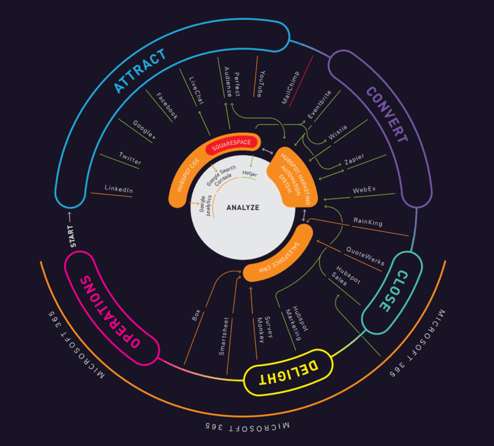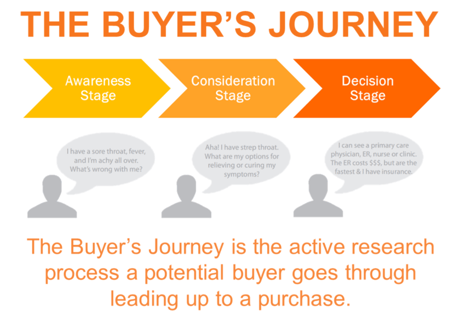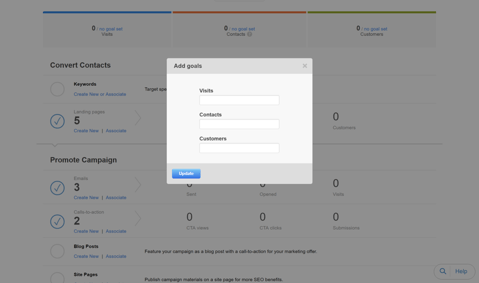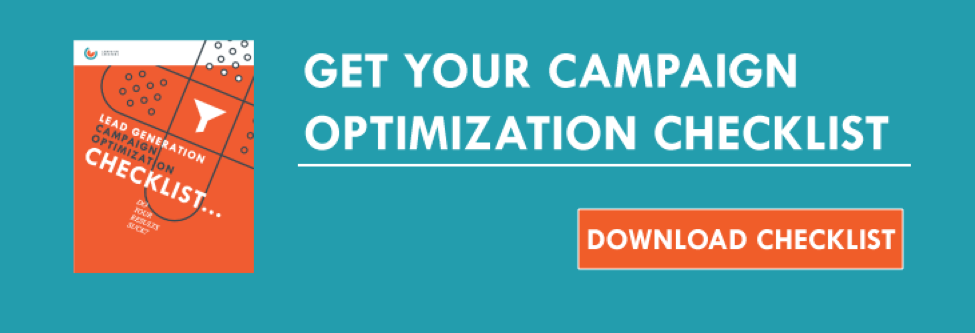 We’ve all been there.
We’ve all been there.
It took three months to launch that marketing campaign from start-to-finish. Yes, there were many hurdles along the way, but you pulled it together with the help of your team and even launched on time. You pop the champagne and toast to a job well done.
A week goes by. There is a little bit of action...maybe a top of the funnel (TOFU) form fill or two, but nothing to write home about. After all, you’ve not collected nearly enough data to start compiling reports and making decisions.
A month passes. The campaign numbers still aren’t great. Panic starts to set in. Your client, your boss, and your team are getting antsy. But has your campaign even run for long enough at this point to know whether or not it is performing well? What does “long enough” mean? Hell, what does “performing well” even mean?
Let’s get acclimated
Now, before we jump into campaign optimization or how to analyze performance, let’s make sure we’re talking apples to apples. I will start by defining what I mean by a “campaign” and touch on the evolution (and importance) of the buyer’s journey.
I appreciate the thoroughness but… I just want to optimize my campaign
Is your idea of a campaign the same as mine?
Let’s get aligned on this whole campaign idea. The word “campaign” is defined differently depending on your industry and your typical marketing practices. To set a baseline, here is a definition that I like to use:
Campaign (n.): A multi-touch digital ecosystem, aligned with the buyer’s journey, that helps marketers capture lead information, nurture and qualify leads, and finally empowers both the lead and the salesperson for a sales conversation.
Here are the key parts:
1) Multi-touch:
Your campaign should live across the various channels where your target personas spend their time (i.e. your website, paid advertising platforms, social media platforms, etc.) and include multiple touch points per channel. One form on a single landing page is not a campaign.
2) Digital ecosystem
All pieces of your campaign should work together and constantly communicate with one another. Ideally, the pieces are strategically managed via a clearly defined marketing-technology stack. Check out the example below:

3) Aligned with the buyer’s journey
Your campaign should facilitate a seamless buyer’s journey, and more importantly, a journey that a consumer actually wants to go through.

4) Capture lead information
A typical lead capture transaction occurs when the marketer provides something of value to the potential lead in exchange for their contact information.
5) Nurture and qualify leads
This is the most complex part of a campaign (so we found a video to better explain below). A good measure of how well you are doing with nurturing is the quality of your sales conversations. The golden rule is: not everybody is ready to buy because they gave you their email, and you shouldn’t sell to somebody just because they are interested in your product.
6) Empowers both the lead and salesperson
Primarily, your objective as a marketer is to prepare the lead for a sales conversation. Secondly, to prepare your salesperson to have an effective sales conversation catered towards the potential buyer’s objectives (depending on your average sales cycle this process can take a day or several months).If your campaign meets the above criteria, fantastic! We are aligned. If it doesn’t quite match up, no worries, I promise there are still plenty of valuable takeaways (including a free campaign optimization checklist).
Why should you care about the buyer’s journey?
If your campaign does not support the way your target persona wants to buy, it will be nearly impossible to see positive results.
The buyer’s journey has fundamentally changed. Think about it, compare how you would buy a car today compared to ten years ago? Or even how your parents bought their first car?
Things are changing in the world of buying and selling, and they’re changing at an exponential rate.
But why?
Two words: access & information. One of my favorite marketing/sales influencers, Daniel Pink, sums it up nicely in his book “To Sell is Human.”
Pink sums up his argument with the term “information asymmetry.” Essentially, the cause of the change in buyer behavior is a result of the gradual shift of an informational advantage from the seller to the buyer. In today’s economy, the buyer has all the power!
What does this mean for our marketing? Well, we need to ensure that our campaign is aligned with the way modern consumers make purchases. If not, it is destined to fail. So, before you worry about optimization, ensure your campaign assets and tone reflect this “seller beware” world.
For more information on how the buyer’s journey is evolving, and what we should do as marketers and salespeople, take a moment to watch the video below:
What should I do before my campaign launches?
Before a campaign ever launches it’s imperative to get our ducks in a row from an expectation standpoint. Aligned expectations will improve the likelihood of a successful campaign.
The first step is to establish your campaign benchmarks—what you expect/desire to happen. These are your “expected values.” There are a several sources you can use to determine those benchmarks.
1) Your company’s historical campaign data (preferred)
No two businesses or industries are the same, so what better to use as a benchmark than your own company’s past performance?
2) Your closest competitor’s data
If you are fortunate enough to have access to this information, it's a huge competitive advantage. There are also tools out there, like SpyFu, to help you gather some key data points.
3) An Industry Standard
While industry averages are often grossly simplified, they are better than nothing at all!
Bonus: HubSpot recently launched a great tool that allows you to get benchmark data for email open rate across various industries.
4) Your best guesstimate
This is your last resort, but if necessary, make your best guess based on heuristics and what you know. Here is a cool article on how heuristics can be applied to marketing.
What should you benchmark?
You should establish benchmarks for all key campaign metrics. Some examples include: email open rate, form conversion rate, social media impressions, average time on page, etc. However, they will vary based your specific campaign’s infrastructure.
The golden rule: If a metric can be analyzed and potentially contribute to the success of a campaign’s objective, benchmark it!
Speaking of Campaign Objectives…
Yes, it’s true that most businesses market with the intention of increasing revenue. But, not all campaigns are designed with this as the primary intention. Other campaign objectives include increasing brand awareness, event attendance, asset downloads, and more. Before determining the tactics and building the campaign infrastructure, ensure that all the stakeholders are aligned on its objectives.
Now, there are a few different values that will help you determine if you’ve reached your campaign objectives:
1) Goal values – ideal (but achievable) campaign performance metrics
2) Expected values – an accurate prediction of your campaign performance metrics
Hint: these are your benchmarks established in the “What should I do before my campaign launches?” section
3) Observed values – the real-world metrics you observe from your campaign
Let’s put numbers two and three aside for now, we’ll need them for statistical analysis later, and discuss establishing goal value statements. Although it may be a little cliché, assure your goal statements meet the criteria of the tried and true S.M.A.R.T acronym.
Long story short, if your goal value statements match the S.M.A.R.T framework, you are off to a good start. Rather than bore you with the gory details (here is a crash course on SMART goals), I’ll provide you with a quick example instead.
A bad goal value statement is: Achieve a good email click-through-rate for campaign nurture emails.
A good goal value statement is: Achieve a click-through-rate of 2% on nurture email #3 within 90 days of campaign launch.
After you have established all the necessary goal value statements, be certain your stakeholders are also aware of them. You can do document these in your marketing automation software portal. If you are a HubSpot customer, you’re in luck - there is a built in goal setting feature for campaigns.

Get your campaign optimization checklist
Now can we see if my campaign needs to be optimized?!
Yes, let’s get to it! First, you need to determine if your campaign needs optimization by comparing our observed results to what we expected (our benchmarks). We are going to use the chi-square goodness of fit statistical test to compare these two values. Here’s the formula to calculate Chi-square:

Assuming you already launched your campaign (and completed the recommended pre-launch work) you should have all the variables needed. (O is observed value and E is expected value, or your benchmark)
For more in depth coverage of using this test you can watch the tutorial below.
Let’s jump into an example to make this more concrete. We’ll use the same numbers in the video walkthrough below for consistency. As a marketing strategist, you want to know if a recent campaign email is performing well, or if you should take action to optimize it.
Let’s say you sent a campaign related email to 1000 people and 3% of people clicked through the email to your landing page.
This gives you an observed value of 30 or O = 30
Since this is your first campaign, you are comparing your email performance to industry benchmarks. After doing some research, the industry benchmark you found is 1.1% for email click through rate. If we sent an email to a 1000 people in our industry, we would expect 11 to click through.
This gives you an expected value of 11 or E = 11
Now, plug it into the formula and solve!

Get 33.18? Great, but we’re not finished yet.
Now, to see if the campaign email needs to be optimized, we need to compare our observed chi-square to a critical value for chi-square critical. Looking at those old handy chi-square distribution tables I see the critical value is 3.84 at with a significance level of .05 (recommended).
33.18 > 3.84
Result: Your email is significantly outperforming your established benchmark so you should not focus on optimizing it at this time and spend your resources elsewhere.
Luckily, there is a savvy chi-square goodness of fit tool from Social Science Statistics that does the calculations and compares them to critical value for you (especially if you are like me and just hate distribution tables).
Understand that you only analyzed one specific part of your campaign, but this methodology can be applied to nearly any measurable campaign statistic with a discrete outcome (i.e., convert vs did not convert).
Now you can be confident that you are spending your resources on optimizing the right campaign piece.
OK, I have a list of what I should optimize, where do I start?
With our nifty campaign optimization checklist of course! You may be thinking, “but I have several underperforming pieces, how do I prioritize them?” A good place to start at the beginning of the buyer’s journey, starting from from left to right. Or, in HubSpot terms, optimize the campaign assets associated with the Awareness Stage first, then the Consideration Stage, and finally the Decision Stage. Which makes sense. If your awareness stage is broken, most people aren’t converting to the Consideration Stage in the first place. Why optimize something for such a small subset of your potential leads?
Another way to think about optimization priorities is to order them by potential positive impact on campaign results. While this is good in theory, it doesn’t account for other important variables such as the time and effort it would take to complete the task. Fortunately, to set priorities, you can use a process that is simple as P.I.E.
P.I.E stands for Potential (what is the potential positive impact on the campaign results), Importance (how critical is it to your overall business objectives), and Ease (how difficult is the task to complete).
For more information on PIE or to learn other prioritization methods check out ConversionXL’s comprehensive article on the subject.
In order to determine the priority order of your campaign optimization task list, assign each letter of P.I.E. a score of 1-10, then take the average of those three numbers. Organize those averaged numbers by activity from largest to smallest, you will have your list of priorities!
Campaign Optimization Checklist
When analyzing campaign performance, it is easy to get lost in the weeds. Always remember the big picture! If you are worried about your campaign’s performance, likely you are experiencing one of the following challenges:
1) You do not have enough eyeballs on your campaign.
2) You aren’t converting those who do engage with your campaign into leads.
3) You aren’t properly nurturing and qualifying leads for sales conversations.
The Campaign Optimization Checklist was built, and even color-coded, with these three challenges in mind. As a bonus for making it all the way to the end of this article, I have included the first pages here. There are even more tips and tricks in the full version!
Remember that pressing the launch button is never the final step in a campaign. There is always an email subject line to improve, a form to optimize, and a nurture workflow to refine.
Now what are you waiting for, get the full checklist and start optimizing!

No comments:
Post a Comment